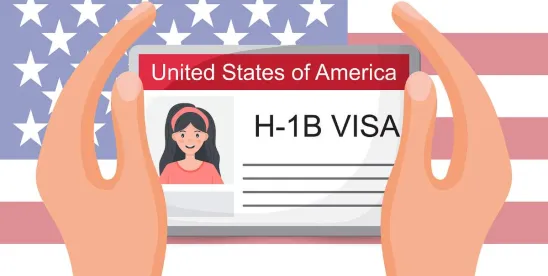The H-1B visa classification provides a pathway for U.S. employers to sponsor foreign national employees to work in a specialized knowledge position in the U.S. Employers that have experience with the H-1B visa classification know some of the regulatory hurdles that accompany this visa classification, including the requirement to pay the higher of the prevailing wage or actual wage. However, some employers may not know the H-1B visa classification also requires employers to create and maintain a Public Access File for each H-1B employee.
An employer’s responsibilities as an employer of an H-1B nonimmigrant worker are federal law and U.S. Department of Labor (DOL) regulations require the employer to obtain a Labor Condition Application (LCA) and maintain a public access file, per these requirements:
Notice Requirement
Notice of the LCA must be posted, or if the position falls under a collective bargaining, agreement must be provided to the union, before filing the LCA. The notice may be the LCA itself or a document of sufficient size and visibility that indicates: H-1Bs are being sought; the number of H-1Bs being sought; the occupational classification; the wages offered; the period of employment; the location(s) of employment; and that the LCA is available for public inspection. The notice also shall state where complaints may be filed.
The notice must be posted “in at least two conspicuous locations at each place of employment” for a total of 10 consecutive days on or within 30 days before the LCA is filed. An employer may provide an electronic copy of the notice to employees in the same occupational classification through any means it normally communicates with employees to include home page, electronic bulletin board, or email. If email, it need only be sent once. Other electronic notices should be posted for 10 consecutive days.
Labor Condition Application Process
The employer must file an LCA with the DOL containing attestations that state the following:
a) The employer is offering and will offer during the H-1B nonimmigrant’s period of authorized employment the greater of either the actual or prevailing wage level for the position offered
b) The employer will provide working conditions for the H-1B nonimmigrant that will not adversely affect the working conditions of workers similarly employed (conditions include benefits which are to be offered to the nonimmigrant on the same basis and same criteria as other U.S. workers)
c) There is not a strike or lockout in the course of a labor dispute in the position offered at the place of employment
d) The employer has provided or will provide notice of this LCA filing to the bargaining representative of the employer’s employees or, if there is no bargaining representative, then to the affected workers either through electronic posting or by posting in a conspicuous location at the place of employment
e) The employer has determined its status concerning H-1B dependency
f) The employer has provided the information about the occupation in the LCA form.
An employer is required to provide a signed copy of the certified LCA to the H-1B employee no later than the date the employee reports for work.
Public Access File
Within one day of filing the LCA, an employer must make available a Public Access File for public inspection to interested parties. Any member of the public requesting access to the documents must be allowed to capture the information through such means as transcription, scanning, or taking photographs. The public access file must be available either at the employer’s principal place of business or at the work location. The Public Access File must include the following documents:
a) Labor Condition Application: A signed copy of the filed LCA must be kept in the H-1B employee’s Public Access File
b) LCA cover pages with instructions: Form ETA 9035CP must be retained in the Public Access File
c) Actual wage statement: A full, clear explanation of the system that the employer used to set the “actual wage” the employer has paid or will pay workers in the same position as the H-1B employee. The DOL defines “actual wage” as the wage rate paid by the employer to all other individuals with similar experience and qualifications for the specific employment in question. Payroll records are not required for public display but must be retained.
d) Prevailing wage statement: A copy of the documentation used to establish the prevailing wage. This may be a general description of the source and methodology, although wage data must be retained.
e) Notice: A copy of the notice provided to the union or employees
f) Benefits summary: A summary of benefits offered to U.S. workers in the same occupational classification as the H-1B employee. If there are any differentiation in benefits, a statement as to how differentiation in benefits is determined.
g) List of entities. Where the employer utilizes the definition of “single employer” in the Internal Revenue Code (IRC), a list of any entities included as part of the single employer in making H-1B determinations
h) Merger, acquisition, or corporate change of employer: In the event of an organizational change, the public inspection file must also contain 1) A sworn statement by a successor entity accepting all liabilities of predecessor entity, 2) Affected LCA numbers(s) and effective dates(s), 3) Description of successor entity’s actual wage system, and 4) Successor entity’s employer identification number
i) Exemptions: If an organization is deemed to be H-1B dependent or a willful violator, and it indicates that an employee is exempt under 20 CFR §655.737, a list of exempt H-1B employees
j) Recruitment: If an organization is deemed to be H-1B dependent or a willful violator, a summary of recruitment methods used and the time frames of recruitment of U.S. workers
Retention Requirements
The records in the Public Access File must be kept either at the employer’s principal place of business in the U.S. or at the place of employment. The employer shall retain the records for a period of one year beyond the last date on which any H-1B nonimmigrant is employed under the LCA or, if no nonimmigrants were employed under the LCA, one year from the date the labor condition application expired or was withdrawn. If a complaint is filed, the Public Access File must be kept until the complaint is resolved.
Notably, DOL will retain an LCA for five years from the certification or other final action date.
Payroll records are not required to be maintained in the Public Access File. However, they must be retained for the retention period but no less than three years in the event of a DOL inspection.
Failure to comply with the Public Access File requirements may result in penalties, fines, or other adverse actions. It is essential for employers to maintain accurate and up-to-date Public Access Files to demonstrate compliance with the H-1B regulations.





 />i
/>i
